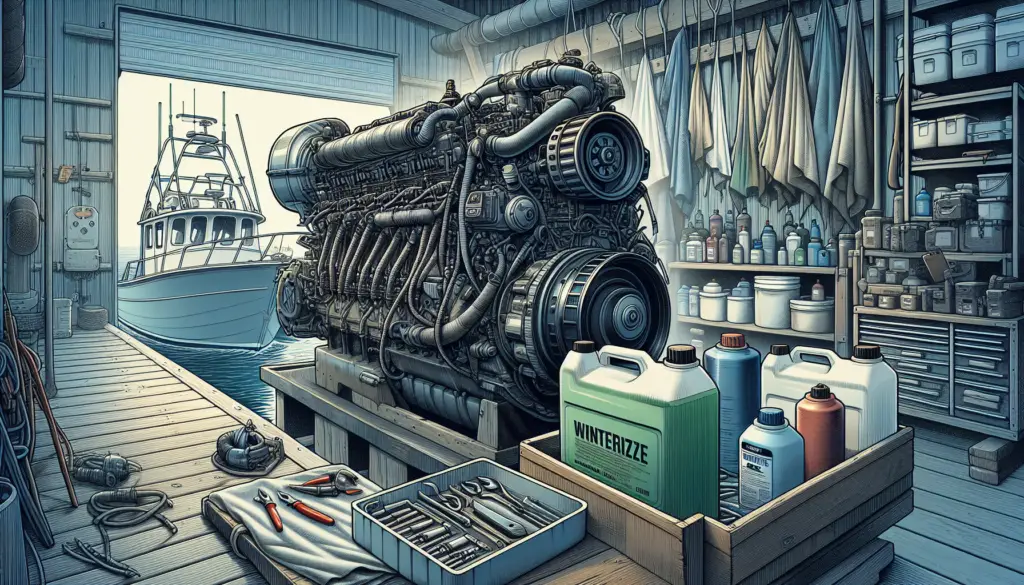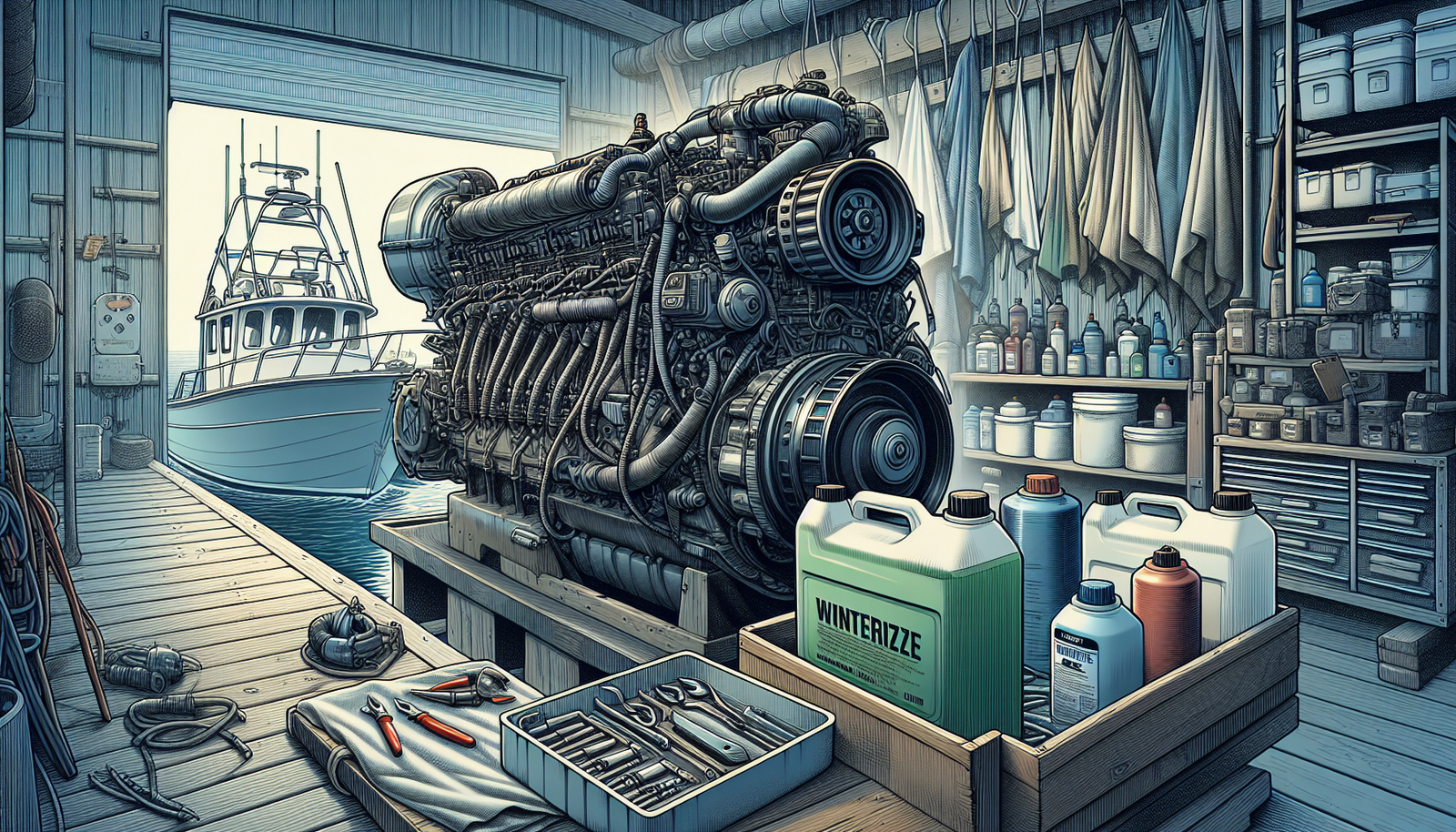Protecting your fishing boat engine from harsh winter conditions is absolutely crucial to ensure its longevity and optimal performance. “Best Techniques For Winterizing Your Fishing Boat Engine” offers you a wealth of knowledge about the right maintenance procedures to help you prepare your precious fishing buddy for winter’s brutality. The article lays out the best tried-and-true methods as well as a few innovative techniques that will keep your engine running smoothly for countless fishing trips to come. So, gear up and get ready to give your boat engine the proper winter care it deserves.
Understanding the importance of Winterizing
Winter is coming and your boat engine needs special care and attention to effectively face the harsh cold conditions. Winterizing your boat engine is a preventative maintenance process which involves making specific adjustments and changes to make sure that the engine stays in excellent shape throughout the winter season.
Reasons to winterize your engine
There are a number of reasons why you should give your boat engine the winter treatment. The first and most obvious reason is protection against freezing temperatures. Your engine contains numerous elements that can freeze, expand, and crack. Winterizing can help to ensure this doesn’t happen. Furthermore, winterizing helps to prevent corrosion and rust inside your engine. Leaving contaminants like water and debris sitting in your engine for long periods can cause extensive corrosion and deterioration.
How neglecting winterization can harm your engine
Neglecting to winterize your engine can lead to various negative consequences, and can ultimately decrease the longevity of your engine. The build-up of condensation can cause rust and corrosion, which in turn, can cause engine parts to seize together. Moreover, the freezing of water within the cooling system can cause expansion and cracking. Such large-scale damages can be extremely expensive to repair.
Effect of temperature changes on the engine
Extreme temperature fluctuations are detrimental to the health of your engine. When the engine is subjected to freezing conditions, the oil thickens, leading to insufficient lubrication. This can add to the engine wear and cause premature engine failure. Moreover, metal parts can become brittle and susceptible to damage in cold temperatures. Thus, it’s crucial to winterize your boat engine to counteract these potential problems.
Preliminary steps before Winterizing
Before you start the winterization process, there are a few preliminary steps you should take.
Cleaning the boat and engine
Start by giving your boat and engine a good clean. By doing this, you’re not only starting the winterization process with a clean slate, but you could also prolong the life of your boat by preventing unnecessary dirt and grime accumulation.
Inspecting for damages or issues
During the cleaning process, you should carry out an inspection of the boat and engine. Look out for any signs of damage that may need repair, or any issues that need addressing before you start the winterizing process.
Having necessary winterization supplies on hand
Once you’ve cleaned and inspected your boat, it’s time to gather all the necessary supplies for winterization. These may include engine oil, oil filter, antifreeze, fuel stabilizer, fogging oil, and marine safe cleaners.
Changing the Engine Oil
Performing an oil change is an essential step in winterizing your boat engine.
Why oil change is necessary for winter
It’s vital to change your oil before the winter comes because the oil has a shelf life. This means that after some time, the oil begins to break down and won’t fully protect your engine. Plus, changing the oil can help get rid of dirt, dust, and other contaminants that might have accumulated in the oil over time.
Step-by-step guide to changing engine oil
Start by warming up the engine which will make the oil thin and easy to drain. Next, locate the drain plug and place an oil pan beneath it to catch the oil, then remove the plug. Once all the oil has drained out, replace the oil plug. Now it’s time to remove and replace the oil filter, and lastly, fill the engine with new oil.
Proper disposal of used oil
Used oil needs to be disposed of properly as it poses a significant environmental risk. You can take it to a recycling center or a location specifically intended for used oil.

Fuel System Care
A crucial step in winterizing your boat engine is caring for your fuel system.
Filling up the fuel tank
The first step is to fill up the fuel tank. This will prevent condensation from forming inside the tank when it’s not being used.
Adding fuel stabilizer
Next, add a fuel stabilizer, which will preserve the integrity of your fuel throughout the winter. Make sure to thoroughly mix it with the fuel.
Running the engine to circulate the stabilizer
After adding stabilizer, run the engine for about 10 minutes to circulate the stabilizer through the entire fuel system.
Draining the Cooling System
Draining the cooling system is a vital step when preparing your boat for winterization.
Importance of draining the cooling system
The cooling system, just like the fuel system, needs great care. Water left in the cooling system can freeze and expand, leading to cracks and other serious damages.
Instructions for draining coolant
To drain the coolant, locate the drain plug and remove it. Have a container ready to catch the coolant as it leaves the system. Once drained, replace the plug and refill the system with a combination of antifreeze and water.
Ensuring all water is removed
Make sure all the water has been drained before refilling the cooling system. This is important because mixing antifreeze with any leftover water will dilute it and diminish its effectiveness.
Engine Fogging
Fogging the engine is an essential step in any winterization process.
What is engine fogging
Engine fogging involves spraying a special oil into the air intake of the engine to leave a protective coating on the inside of the engine. This protects the engine from moisture and corrosion over winter.
How to fog the boat engine
You can fog the engine by starting it and then spraying the fogging oil into the air intake. Make sure the engine is at idle speed and spray until the engine smoke turns from white to blue.
Choosing the right fogging oil
There are several options for fogging oils. It’s best to consult your engine manual or a boat professional to select the right one for your specific engine.
Battery Maintenance
Battery maintenance is another crucial part to winterize your boat engine.
Disconnecting and removing the battery
First, disconnect the battery by starting with the negative cable. Then, remove the battery from the boat.
Cleaning the battery terminals
Once the battery is out, clean the terminals using a solution of baking soda and water. This helps to prevent corrosion.
Charging and storing the battery safely
Next, fully charge the battery and find a safe, cool, and dry place for storage. Avoid concrete and metal surfaces as they can drain your battery.
Bilge Cleaning and Protection
Cleaning and protecting the bilge is an important step in winterizing your boat.
Cleaning the bilge
Start by removing any water in the bilge, then clean it thoroughly using a marine safe cleaner. This will prevent corrosion and any unpleasant smells when you open your boat in spring.
Applying anti-freeze to the bilge
After cleaning, apply some non-toxic antifreeze to the bilge. This will keep any remaining water from freezing and potentially cracking your bilge.
Ensuring proper bilge ventilation
Make sure the bilge area is well ventilated. This will help prevent the build-up of dangerous gases.
Protecting the exterior parts
Don’t forget the exterior parts of your boat when winterizing!
Dealing with marine varnish and paint
Treat any wooden parts of your boat with marine varnish to prevent them from drying out. Any painted areas should also be touched up to prevent rust.
Covering and protecting metal parts
Any exposed metal parts should be covered and protected to prevent rusting over winter. You can use a rust inhibitor for this purpose.
Properly covering the boat
Once everything else is done, make sure to properly cover your entire boat. This not only protects it from the elements, but also from pests.
Final Checks before Storing
Before you store your boat, you should do a final inspection to ensure all winterization steps have been completed.
Re-checking all the winterization steps
Go through your winterization checklist once again, to ensure no steps have been missed.
Preventing pest infestation during storage
To prevent pest infestation during storage, make sure all doors, windows, and vents are sealed. You might also consider using pest repellent sprays or traps.
Choosing the perfect storage location
Finally, choose a storage location that is safe, dry, and free from pests. Above all, the area should be protected from extreme weather conditions.
By meticulously following these steps, you can ensure that your boat engine and the rest of your vessel will be ready to take on the winter months with ease, and be ready for action come next spring.

